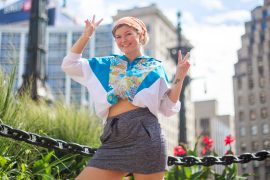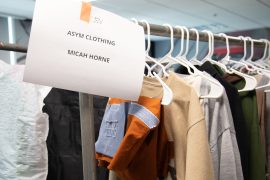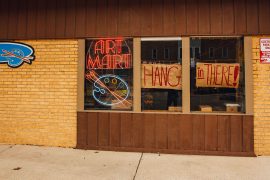One year ago, the entire fashion world was consumed with the “see-now, buy now” concept that allowed consumers to purchase select items immediately after seeing them on the runway. The concept was polarizing. Dozens of designers in New York and London jumped on the idea while Milan and Paris both prohibited labels showing there from engaging in the tactic.
Some labels, such as Burberry and Rebecca Minkoff, considered the experiment a win, even though not enough to save Christopher Bailey’s job at Burberry. Other labels, such as Tom Ford, decided that the logistics and supply chain challenges were too great to justify the relatively meager bump in sales. By the time February rolled around, over half of those who tried the “buy the runway” concept in September had abandoned it and returned to a modified drop schedule based on traditional seasons.
At the core of the problem is the underlying fact that runway presentations do not now, nor have they ever, resulted in significant direct sales. Pay attention to the qualifier in that last sentence. Yes, there is almost always a bump in numbers following any kind of show. Labels need more than a bump, however. They need sustained growth fueled by brand loyalty and runways are not the best mechanism for delivering on that goal.
Instead, an increasing number of major labels are looking to the concept of pop-up shops as a way of pushing retail sales throughout the season, keeping customers buying new merchandise year-round. By some estimates, pop-up retail in 2016 was responsible for over $50 billion in revenue, significantly more than what the combined “buy the runway” efforts achieved.
For those just now joining the conversation, pop-up retail is when a brand opens a temporary shopping space, often for only one night or a slightly longer limited engagement, typically to take advantage of heavy foot traffic brought by an unconnected public event. Starting in Los Angeles, the tactic proved immediately successful and quickly spread all over the world. Now, even major labels such as Versace and Gucci are doing highly-targeted pop-up shops in places where they know people are likely to buy.
How well do pop-ups work? Consider some of the prominent labels who have done pop-ups in the past year:
- Prada Debuts New Pop-up Retail Project in Macau
- Oscar de la Renta Opens Boston Pop-up
- Louis Vuitton Opens Sneaker Pop-Up in New York
- Valentino Fetes Resort Pop-up in Tokyo
- Dior Sets Pop-up at Harrods
Pop-ups hold a number of advantages in that they allow a brand to test the waters of a brick-and-mortar set up without incurring the risks of a long-term lease. Pop-ups allow labels to set up shop in unusual places that get heavy foot traffic, such as airports, museums, music festivals, and street fairs, capturing people who might not otherwise be exposed to the brand. The short-term nature of the concept also allows landlords to make creative use of empty space, which is especially attractive as we near the holidays.
Pop-ups are not uncommon around the Midwest and Indianapolis specifically. PATTERN and Downtown Indy, Inc has sponsored pop-up events in the downtown area that have worked well for both the venue owners and sellers.
Not that pop-ups are especially easy. PATTERN editor-in-chief, Polina Osherov, told me via email: “There was a pretty steep learning curve, and the logistics/process can be made to run smoother, but overall we had great engagement ….”
Possibly the biggest factor designers need to consider in thinking about pop-ups is that they’re not working with traditional retail. The short-term nature of the concept requires a different approach from everyone involved. For example, the contract is usually a license, not a lease, and gives the landlord a lot more say and access than they would normally have. Pop-ups located on the first floor of a building with condominiums above may be subject to special rules, especially in regard to signage. Matters like HVAC, maintenance, and who is responsible for city/county licenses are all matters that have to be addressed.
Yes, pop-ups can be expensive to produce. One still has to have clothes, racks, a point-of-sale system, and most every other consideration common to brick-and-mortar retail. However, the opportunity for partnership, whether with an organization like PATTERN, or a retailer, festival owner, or real estate developer, is much higher than with normal retail start-ups. Pop-ups can be a designer’s signal whether to open their own storefront or go in a different direction.
Designer Nikki Blaine reminds designers that when they are paying any kind of fee they have to consider what they’re getting in return. With runway presentations, the return might be a bit of positive word of mouth, maybe a couple of small orders, but not much beyond that. With pop-ups, on the other hand, there is a greater opportunity for not only generating hard sales but spreading one’s brand recognition, resulting in continued sales down the road.
Pop-ups offer a world of options, including displaying digital runways, that every designer has the ability to imagine an experience in their own way. They’re still not the only runway alternative available, though, and in our final article, we’ll look at what influencers can offer an emerging designer.




